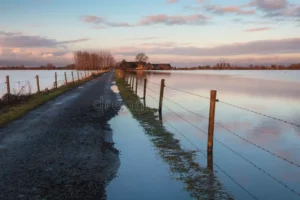 It’s time to get outside and enjoy the crisp autumn air! Fall is the perfect season for outdoor family activities. From raking leaves to apple-picking, there are plenty of fun fall activities for the whole family to enjoy. Whether you’re looking for something to do on a weekend afternoon or a way to break up your day, these outdoor family fall activities will make it easy to get the whole gang together for some fresh-air fun. So gather up your loved ones, and let’s rake in the fun with these autumn family favorites!
It’s time to get outside and enjoy the crisp autumn air! Fall is the perfect season for outdoor family activities. From raking leaves to apple-picking, there are plenty of fun fall activities for the whole family to enjoy. Whether you’re looking for something to do on a weekend afternoon or a way to break up your day, these outdoor family fall activities will make it easy to get the whole gang together for some fresh-air fun. So gather up your loved ones, and let’s rake in the fun with these autumn family favorites!
Scenic Leaf Peeping Spots
Experience the beauty of nature’s colorful transformation with a visit to some scenic leaf peeping spots this fall. Whether you take a leisurely stroll through a local park or embark on a scenic drive through the countryside, you’ll be surrounded by breathtaking vistas of vibrant reds, oranges, and yellows. Grab your camera and immerse yourself in the natural splendor of the season. Don’t miss out on this opportunity to witness Mother Nature’s magnificent artwork firsthand.
Apple Picking Adventures
Fall wouldn’t be complete without a trip to the apple orchard! Apple picking adventures are a fun-filled family activity that everyone can enjoy. Head out to the orchard and spend the day picking juicy, crisp apples straight from the trees. Not only will you bring home a delicious bounty of apples, but you’ll also create lasting memories with your loved ones. So grab a basket and get ready to taste the sweetness of fall!
Cozy Bonfire Nights
As the nights get cooler, there’s nothing better than cozying up around a crackling bonfire with your loved ones. Picture marshmallows roasting, stories being shared, and the warmth of the fire keeping you toasty. Bonfire nights are the perfect way to create cherished memories and embrace the spirit of fall. So grab a blanket, gather around the fire, and let the flickering flames and the cool autumn breeze transport you to a place of pure relaxation and joy.
Hayrides and Pumpkin Patches
Hop on a hayride and embark on a magical journey through the pumpkin patch! Hayrides and pumpkin patches are the epitome of fall fun. Take a bumpy ride on a hay wagon while breathing in the crisp autumn air and admiring the colorful scenery. Once you arrive at the pumpkin patch, let the excitement begin! Pick out the perfect pumpkin for carving or decorating and create memories that will last a lifetime. Hayrides and pumpkin patches are the perfect way to embrace the joy of fall with your family.
Nature Walks and Hiking Trails
Explore the great outdoors with a peaceful nature walk or invigorating hike this fall! Step away from the hustle and bustle of daily life and immerse yourself in the beauty of nature. Whether you choose a local trail or venture to a nearby national park, you’ll be surrounded by stunning autumn colors and crisp, fresh air. So put on your hiking boots, grab a water bottle, and embark on an adventure that will rejuvenate your mind, body, and soul.
Scarecrow Making Contests
Get creative with your family and participate in a scarecrow making contest this fall! Gather some old clothes, straw, and accessories to create your very own scarecrow masterpiece. Whether you make a friendly scarecrow or a spooky one, the process is sure to bring laughter and fun. Get everyone involved and see who can come up with the most creative scarecrow. It’s a unique and exciting activity that will bring out your family’s creativity and competitive spirit.
Football Tailgating Parties
Get ready to cheer on your favorite team with a lively football tailgating party! Fire up the grill, bring out the snacks, and gather your friends and family for a pre-game celebration like no other. From tossing the pigskin to enjoying delicious food and drinks, tailgating parties are the perfect way to bond with loved ones and soak up the excitement of the game day atmosphere. So put on your team colors, get ready to cheer, and let the tailgating fun begin.
Outdoor Movie Nights under the Stars
Grab your blankets and popcorn, because it’s time for outdoor movie nights under the stars! There’s something magical about watching your favorite films in the crisp autumn air. Set up a cozy outdoor movie theater in your backyard, complete with comfy seating and a big screen. As the stars twinkle above, you and your family can enjoy a night of laughter, suspense, or heartwarming moments. It’s the perfect way to spend quality time together and create memories that will last a lifetime. So dim the lights, press play, and let the movie magic unfold!







